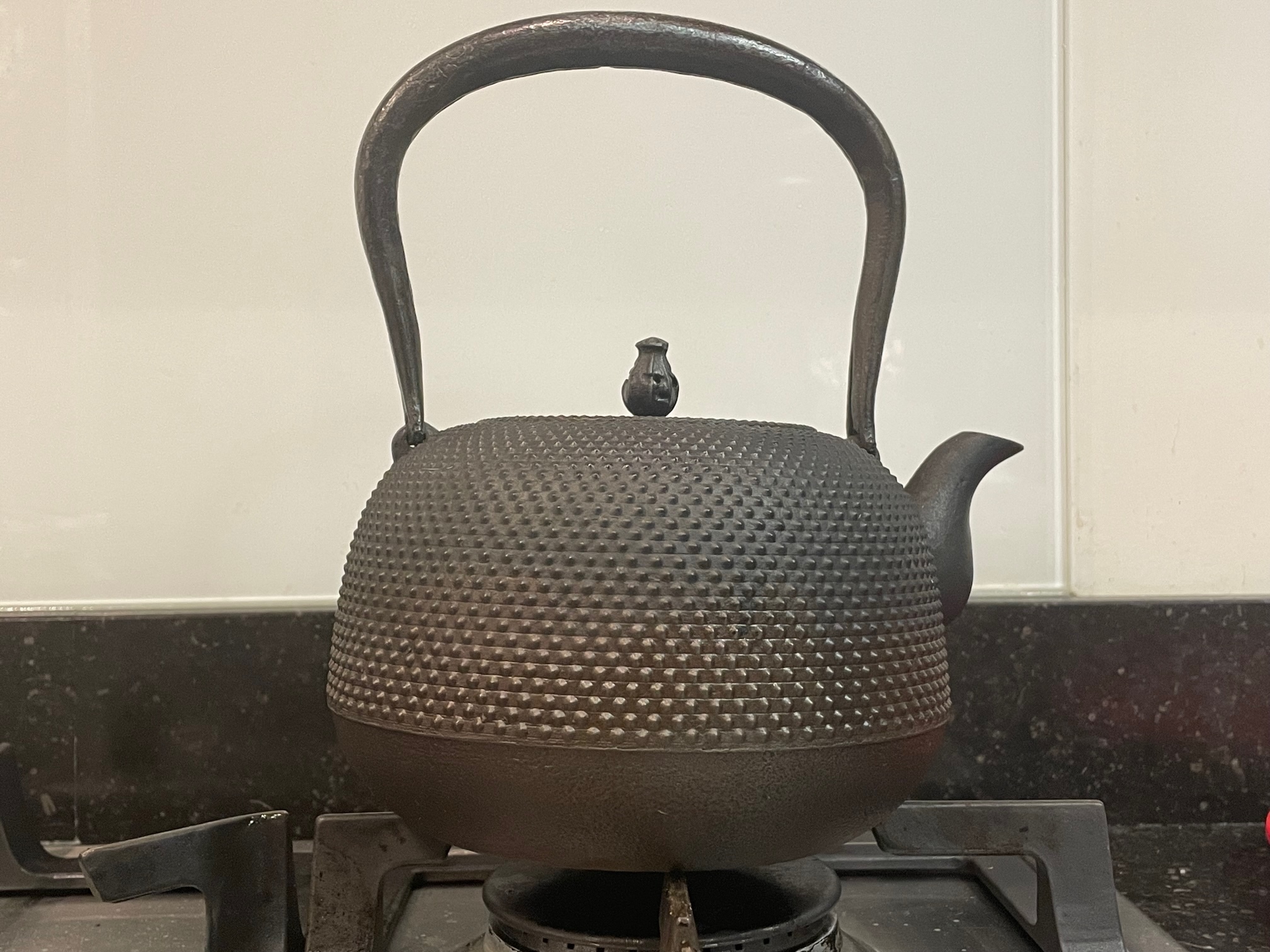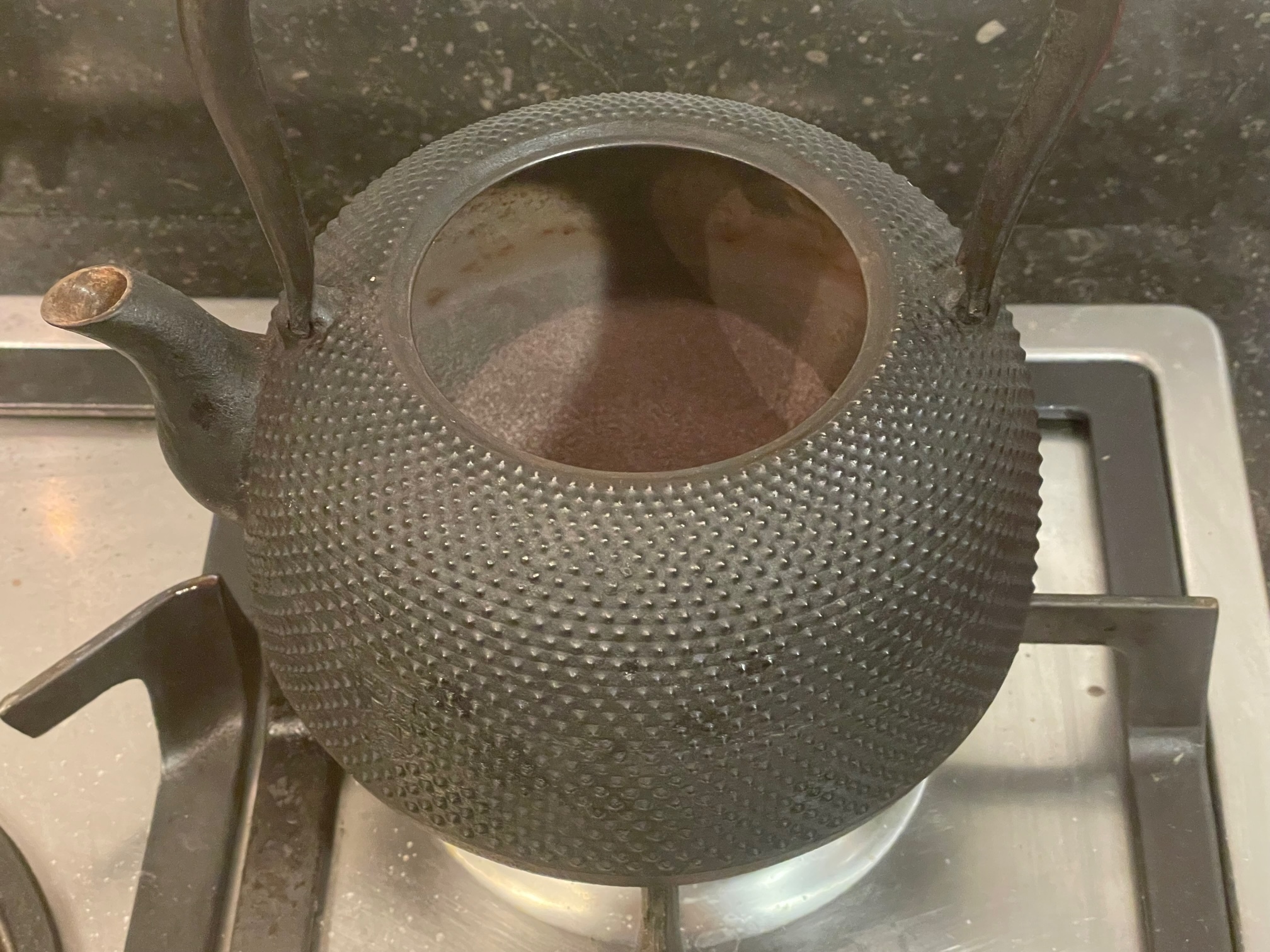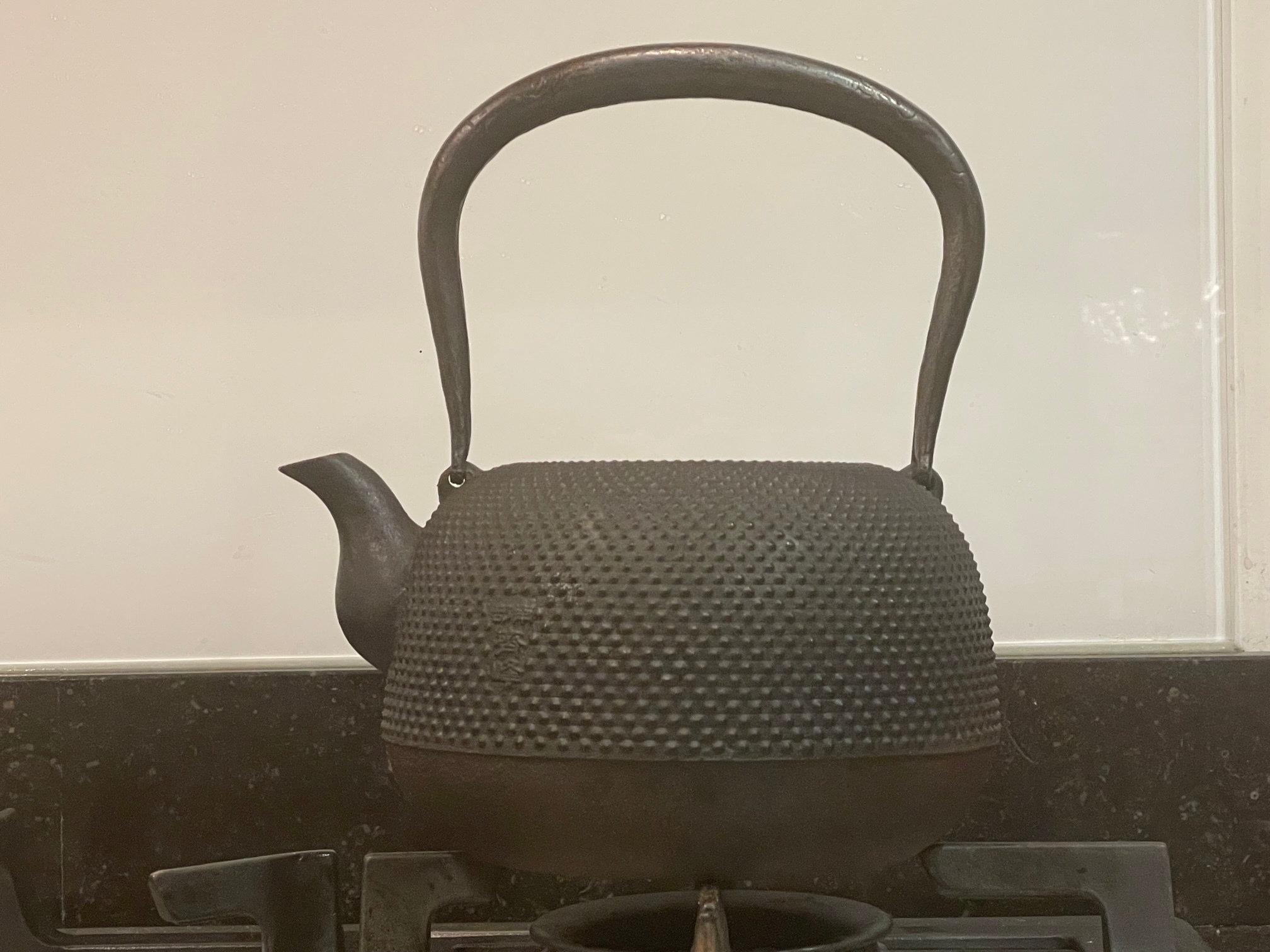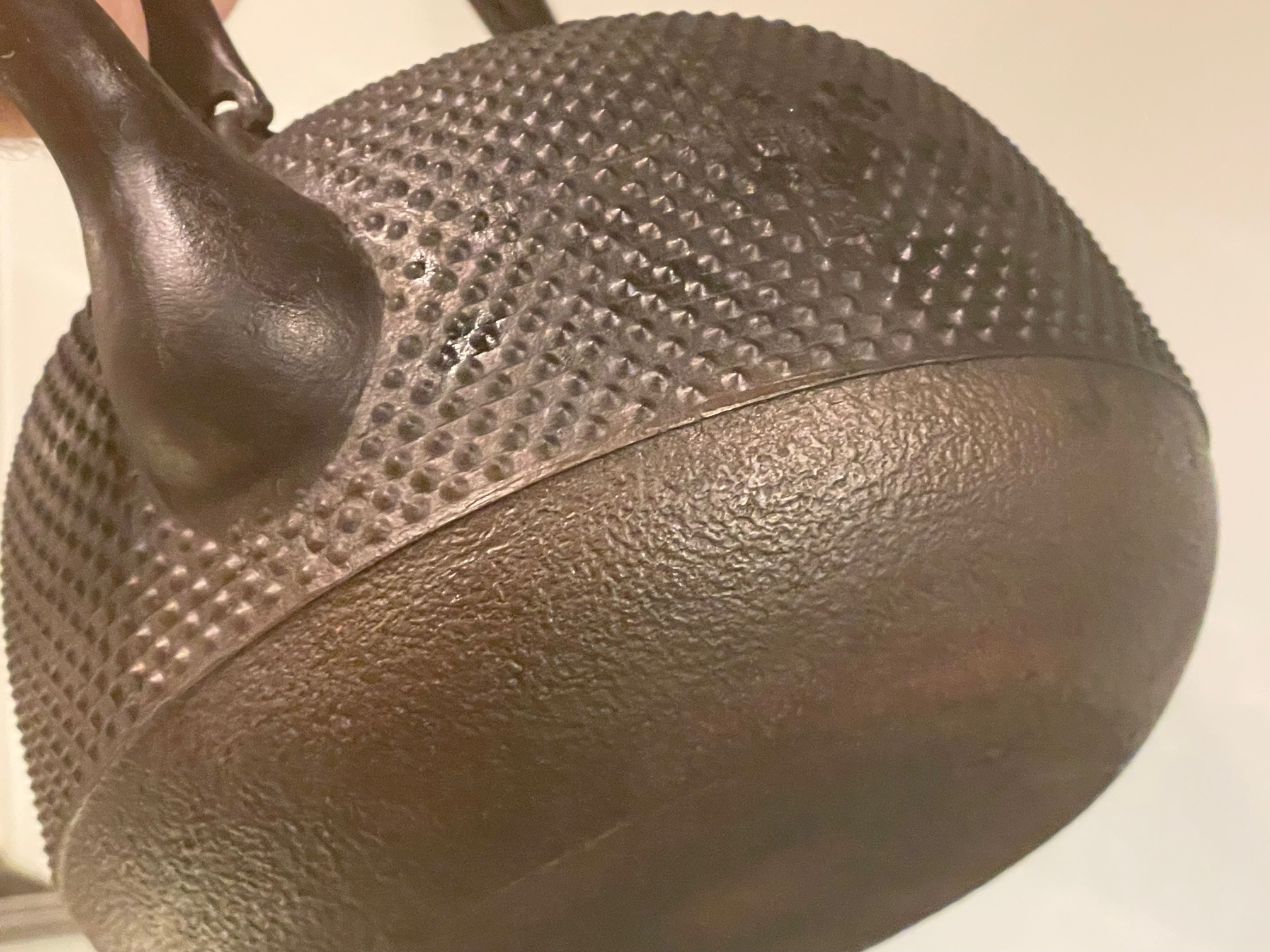do you guys actually use it as a teapot? tea goes inside it? was actual tea inside it when it got burnt like that?
or do you just use it as a kettle to heat water for tea?
i am not an expert, but...
i believe tetsubin are typically coated with something on the outside (usually not on the inside) to inhibit corrosion. traditionally, i think it's a natural urushi lacquer. ordinarily, the tetsubin is only heated when filled with water, so the surface temperature does not go much above 100°C (water boils at 100°C, so excess heat is absorbed by the water and carried away by steam). by heating it dry, the temperature went way above that, and the protective lacquer burned off.
i don't think it's realistic to re-lacquer the outside yourself, although an actual tetsubin workshop could probably make it good as new.
but now that you have bare metal on the outside, it is highly susceptible to "flash rust". you need something on there to protect it. and you might even need to clean it up again first before you do that if rust is already forming.
read through this thread:
viewtopic.php?p=11593#p11593
especially the post i linked to.
you can try to build up a tea residue coating. tea residue isn't totally black, but it does darken with time and heat. there are some lipids in tea residue, but a lot of it is water soluble, so wiping it a lot could remove it or make it look less even. also, it can burn just like the original lacquer (probably even more easily), so don't do that again.

i've never tried this personally or seen it recommended, but applying a very, very thin coat of vegetable oil first would make sense to me. as if you're seasoning cast iron or carbon steel cookware. it would be applied hot and then wiped off almost completely. a foundation of semi-polymerized oil could in theory be a good foundation for further seasoning from tea residue or whatever. not on the inside! only on the outside!
i don't think you'll ever get the outside to look perfectly even and brand new, but you can probably get it looking pretty decent. and most importantly protect it from rust.
for the inside, i'm not sure what's going on there. is there actually rust inside? or is it just organic residue that burnt at high temp and changed color? i'm guessing you have a cake of limescale and burnt organic residue. and maybe some rust.
it might make sense to strip the limescale out with vinegar (or citric acid) solution. afterwards, boil some tea in there to protect it a bit like in the post i linked to.







